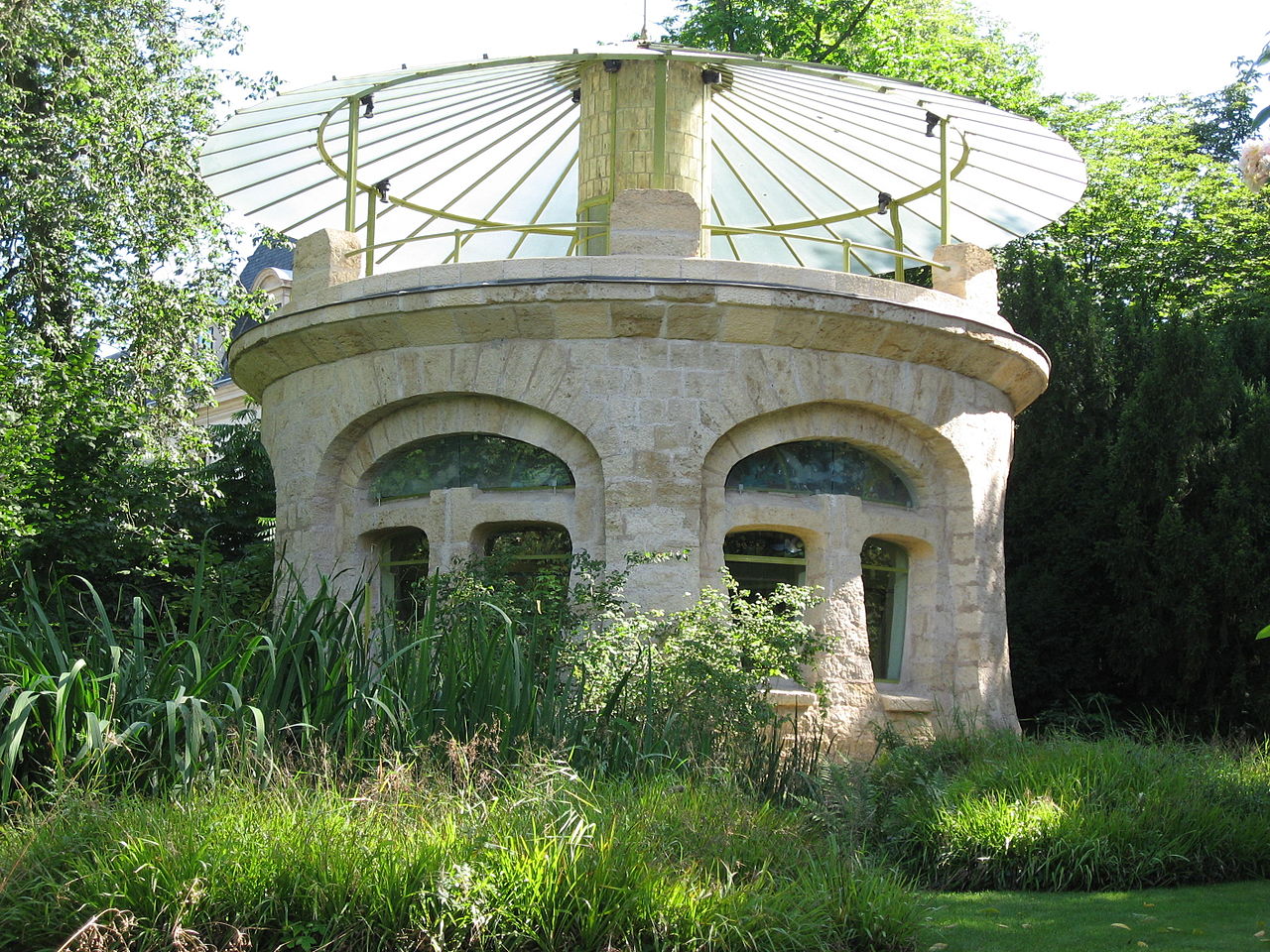#7467. Circular Pavilion with Arched Facade and Umbrella Roof

Before us is a remarkable example of a garden pavilion in classical style, likely dating from the late 19th to early 20th century. The structure is a circular gazebo made of light-colored limestone or sandstone, which gives it a noble, almost antique appearance.
The pavilion's facade is organized around two symmetrical arched openings with semicircular tops. The architectural solution demonstrates attention to proportions and details: the arches are framed by clean lines of stonework, creating a sense of lightness despite the massiveness of the material. Under the main arches are smaller arched openings, forming an interesting rhythmic pattern and adding complexity to the facade composition.
The upper part of the pavilion deserves special attention — an open circular terrace with an umbrella-like metal covering. The radial ribs of the roof structure, radiating from the central pillar, create an expressive geometric pattern that contrasts with the massiveness of the stone base. The terrace railing is designed as simple metal handrails, emphasizing the lightness of the upper tier.
The pavilion is immersed in natural surroundings — tall grasses approach almost to the foundation of the structure, creating a romantic image of an abandoned garden. This interaction between architectural form and nature enhances the picturesqueness of the composition, evoking associations with the pastoral motifs of garden and park art.